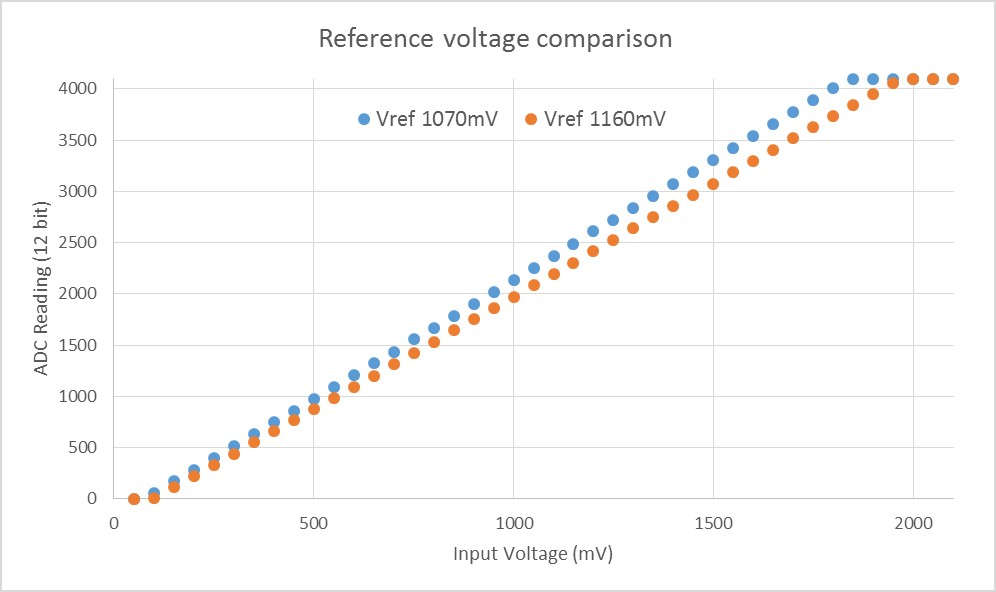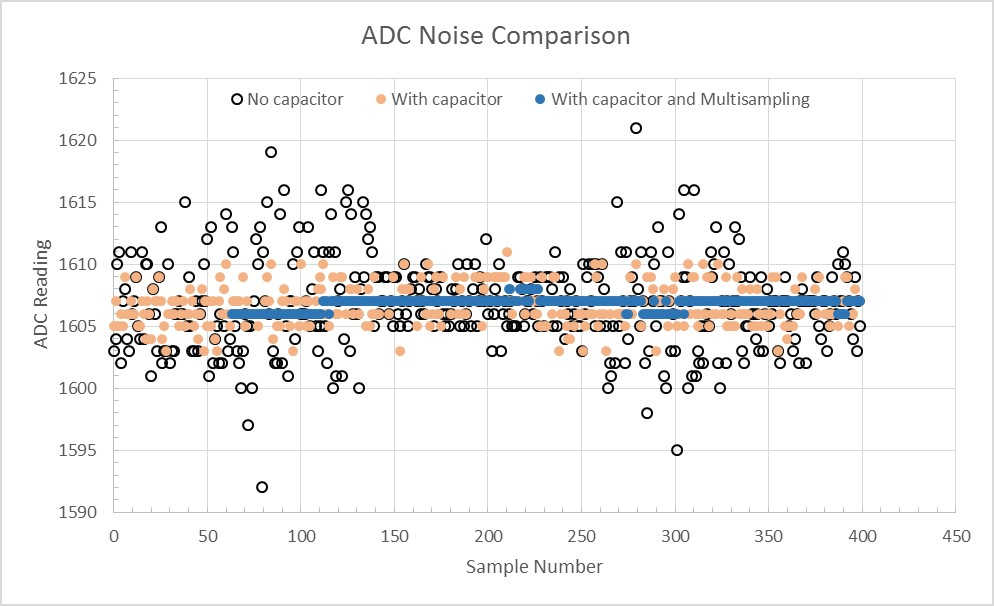| ESP32 In MicroPython: Analog Input |
| Written by Mike James & Harry Fairhead | ||||
| Tuesday, 17 October 2023 | ||||
Page 2 of 3
The response is non-linear near zero and the reference voltage:
In addition to calibration problems the ADC is also sensitive to noise. You can reduce this by adding a 100nF capacitor across the input line and by averaging multiple readings:
The ADC can be set to do conversions continuously, reading each of the selected inputs and it can work in low-power mode at a lower frequency. Alternatively, you can simply start a conversion on a given input when you need the data – this is the only mode that MicroPython supports. The simplest way of using the ADC is to perform a single read of a single input under software control. Before making use of it, you have to create an ADC object associated with the channel: adc=machine.ADC(pin) Once you have selected the input you are going to read, you can start a conversion and get the result using: adc.read() which returns the raw reading of the ADC. The result is in the range 0 to 4095 for 12-bit resolution. You can also use: which always returns a result in the range 0 to 65535 irrespective of the number of bits actually supplied by the ADC. Both of these raw readings generally have to be scaled to turn them into physically meaningful values and they are not corrected for any calibration data available. In most cases you are going to get more accurate and usable results via the method: ADC.read_uv() which returns a result automatically calibrated and converted to μV. The resolution is less than suggested and the result is always a multiple of 1000 μV i.e. millivolts. The simplest A‑to‑D program you can write is: from machine import ADC,Pin adc = ADC(Pin(32)) print(adc.read()) print(adc.read_u16()) print(adc.read_uv()/1000000) For example, with an input at around 1V the output is: 4095 65535 1.063 The actual input voltage may be higher than indicated. If you connect the input to ground you will see: 0 0 0.075 Indicating that the nonlinear portion of the input between zero and 75mV is measured as 75mV. To make the ADC more useful it supports changing the input voltage range via attenuators:
You can set attenuation in the constructor or in the atten method: adc = ADC(Pin(32),atten=ADC.ATTN_11DB) or: adc.atten(ADC.ATTN_11DB) to set the range to approximately 150mV to 2450mV. Notice that the exact range depends on the reference voltage. The absolute maximum input voltage to the ADC is 3.6V, but using such a high voltage risks damaging the ESP32. In practice keep the input voltage below 3.3V. You can also set the number of bits to use with the width method: adc.width(bits) and bits can be any of:
If you want to use any of the more advanced features of the ESP32’s ADC you will need either to create the functions that directly access the hardware or move to C. |
||||
| Last Updated ( Tuesday, 17 October 2023 ) |

